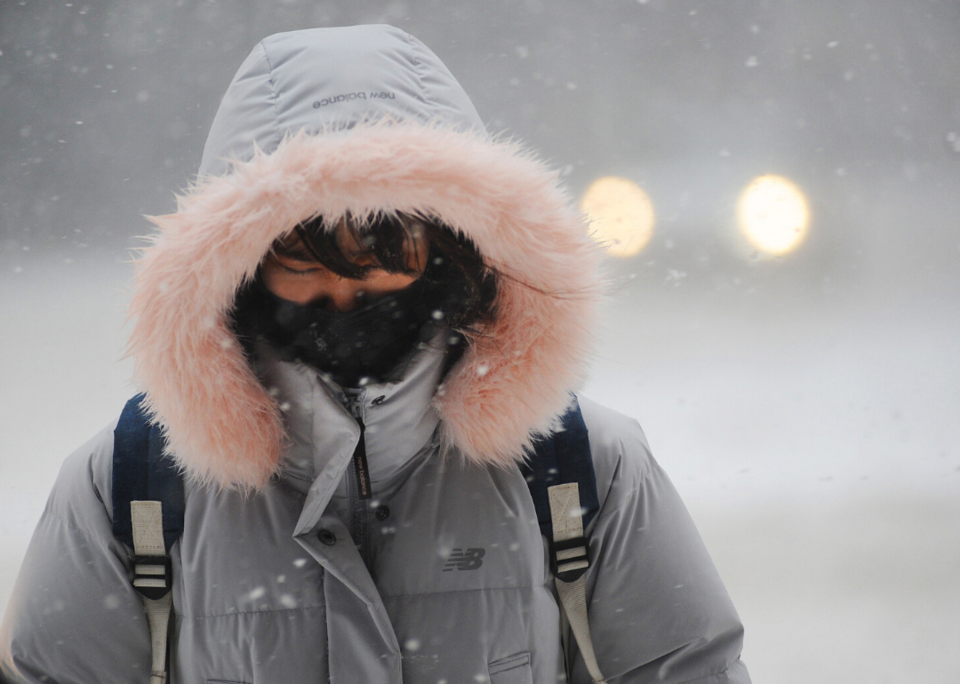Winter looks very different depending on whether you're above or below the Mason-Dixon Line. Below that imaginary line, which runs along on the northern edges of West Virginia and Maryland, winter weather might mean highs in the 50s and snow on rare occasions. Above, you’re talking about black ice, gusting winds, inches upon inches of snow, and road and school closures (particularly for those living in mountainous regions or along the Snowbelt of the Great Lakes). If you’re not used to it, your first real winter can be disconcerting. How do you prepare? Do you need an ice scraper (and what does it look like)? How are snow boots different from regular winter boots?
A common misconception is that our recent spate of record-breaking winters runs counter to a global “warming” crisis. Others believe the crisis only makes warm summers hotter. The full picture, however, is that , and that means even harsher winters. Take this past winter, for example, when Arctic air blew across the country in a highly publicized Polar Vortex.
Whether you believe in the science behind the impending brutal winter season or wish to ignore the cold while you still can during the fall months, we’re guessing you’d still rather be prepared head-to-toe far ahead of time. When the next morning of waking up to another “record low” or “record snowfall” arrives, it’ll be better if you’re stocked up on proper insulation, snow gear, warm socks—and your favourite canned soup.
We know preparing for extreme winter weather can seem overwhelming. That’s why compiled the following recommendations from the National Weather Service, the Federal Emergency Management Agency, and other government organizations, in addition to meteorologists and experts.
Follow these 30 steps and you’ll be prepared for anything the weather throws at you: freezing rain, sleet, snow, even full-on blizzard conditions. Once you have a good pair of gloves, snow tires, and an emergency plan, the weather report doesn’t seem so dreadful after all.
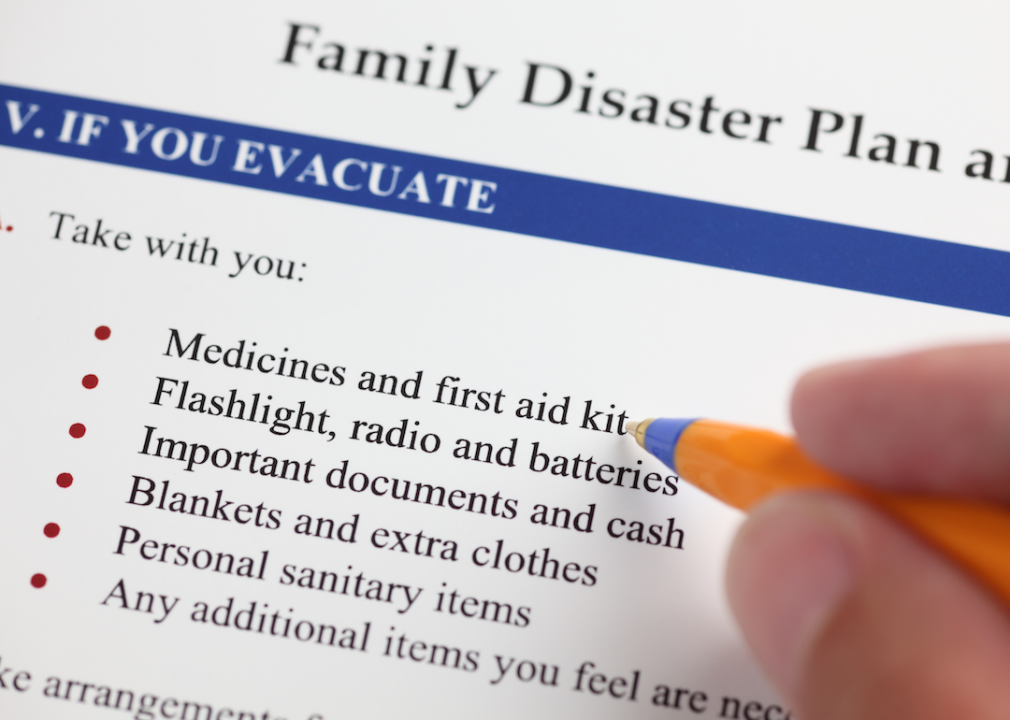
Ekaterina_Minaeva // Shutterstock
#1. Make an emergency plan with your family
Foremost, experts recommend that everyone develop an emergency plan—regardless of the climate in which you live. Consider that you may not be together when a storm hits. According to , your plan should cover where you should evacuate in case of emergency, where you will find shelter if you can’t make it home, and how you will communicate with your family.
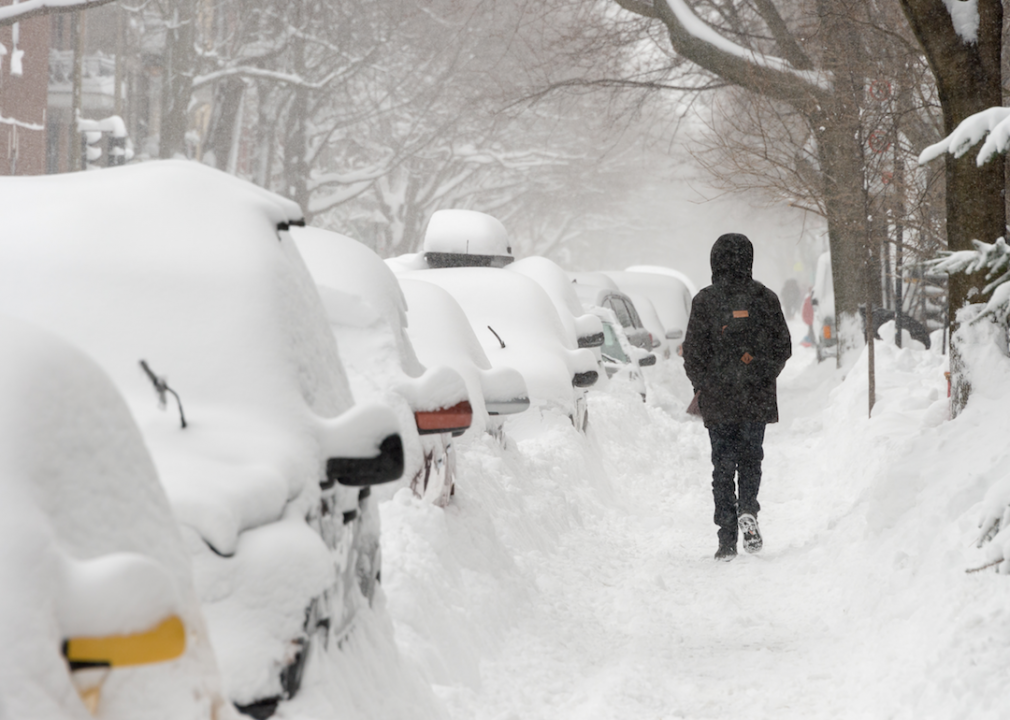
Marc Bruxelle // Shutterstock
#2. Learn the three major winter weather warnings
The National Weather Service could issue , depending on the severity of the storm. Each warning merits a different reaction: The lowest level, a Winter Storm Watch, makes citizens aware of potentially hazardous conditions. A Winter Weather Advisory is issued when ice, snow, or wintry mix is expected. Finally, a Winter Storm Warning coincides with a significant amount of winter weather, so expect school cancellations and office closings for the day.
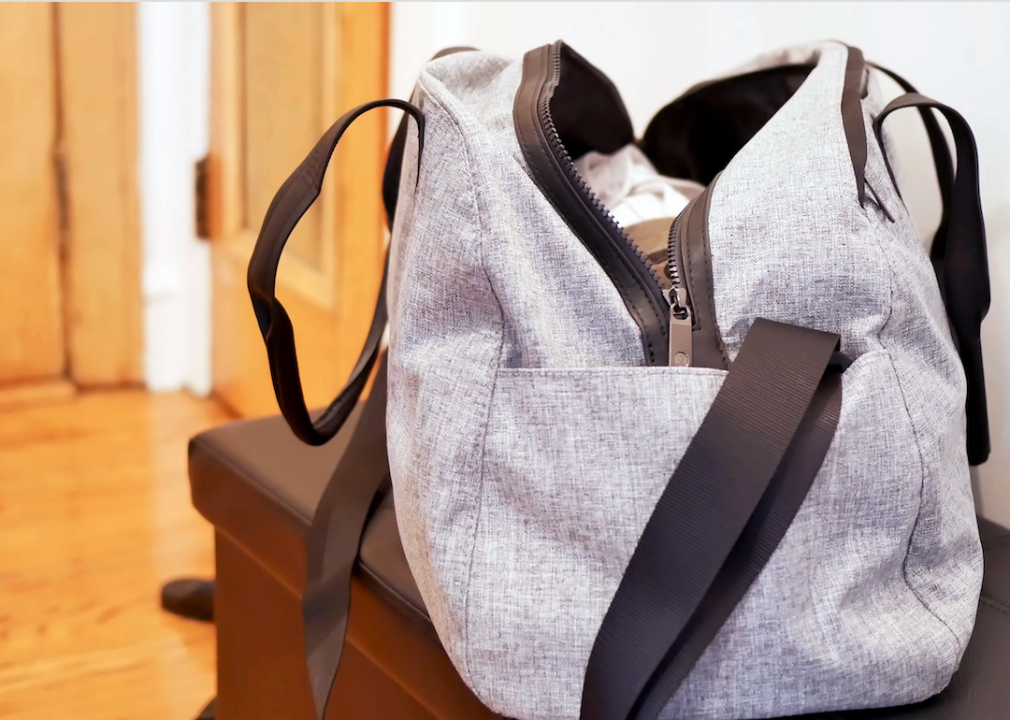
stockstation // Shutterstock
#3. Pack a 'go' bag
As the name implies, a "go" bag contains everything you would need to leave the house in an emergency: copies of all your important documents, an extra set of keys, cash, bottled water, nonperishable food, medications, a first aid kit, a flashlight, and toiletries.

nelen // Shutterstock
#4. Make sure you have a warm coat
Just any old parka won’t do. For a coat that’s warm enough to keep you toasty in below-freezing temperatures, you’ll want to go with a weatherproof exterior and down or microfiber insulation. Layering is always best.
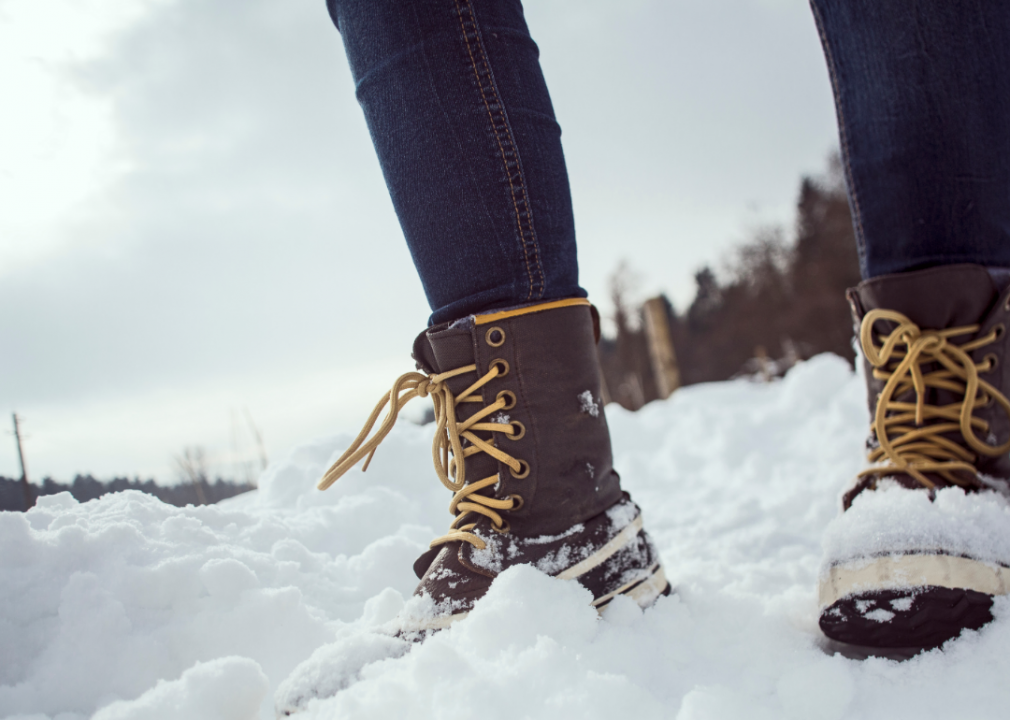
Canva
#5. Get insulated winter boots with good traction
Winter weather conditions can make walking outside treacherous—whether because of snow or black ice. Stay on your feet with a pair of boots with rubber soles with plenty of traction, waterproof uppers, and a warm lining. L.L. Bean and Sorel are two popular, trustworthy brands.
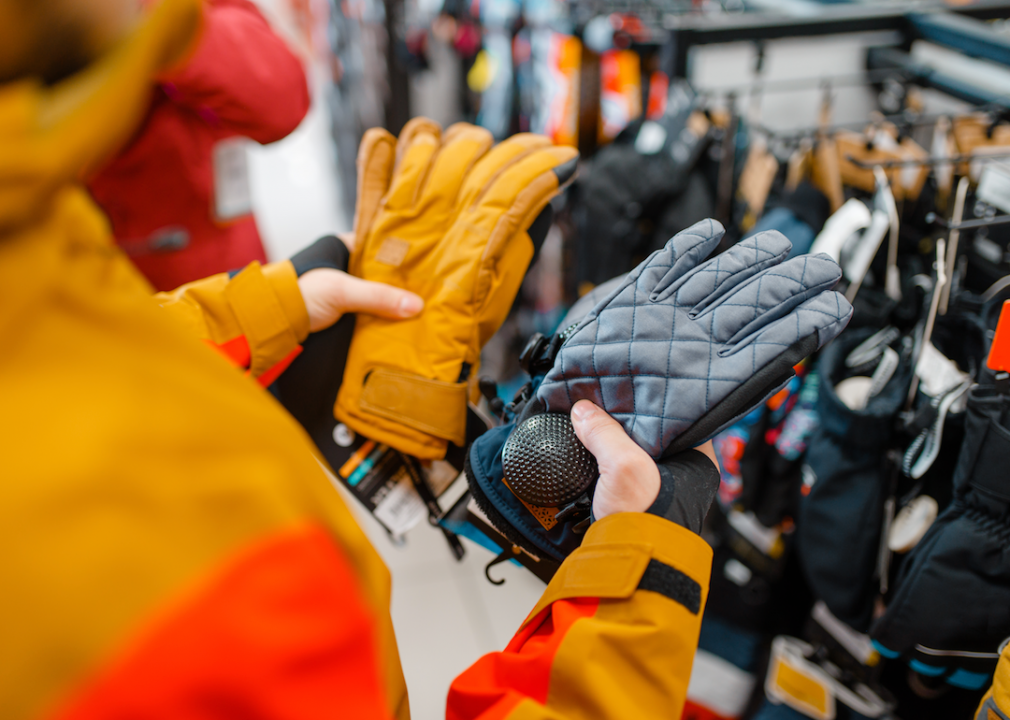
Nomad_Soul // Shutterstock
#6. Purchase weatherproof gloves
If your extremities feel cold, the rest of your body will feel cold, so don’t skimp on the gloves. Opt for gloves made of synthetic material, as they are more water-resistant and windproof than gloves made from natural fibers like cotton or wool. Gloves are obviously crucial to avoiding frostbite when shovelling or exposing yourself to the weather for prolonged periods.
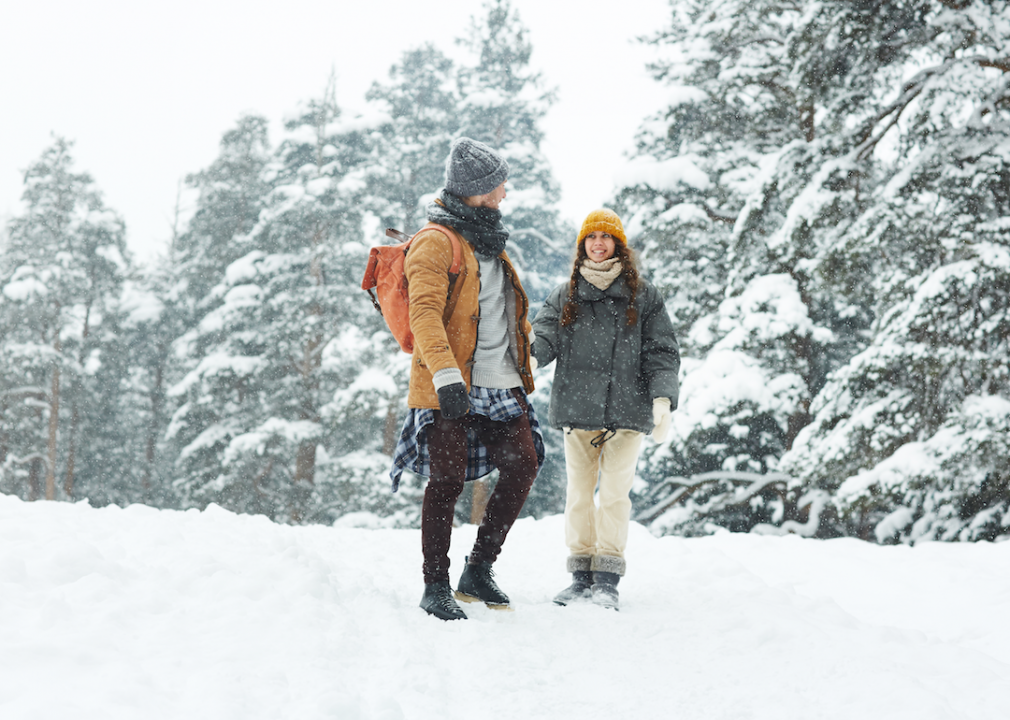
Pressmaster // Shutterstock
#7. Layer up
It’s not all about the outer layers: What goes under your clothes matters, too. Stock up on long underwear, wool socks, fleece-lined tights, and lightweight jackets you can wear underneath your coat. You can always remove a layer if you’re too warm.
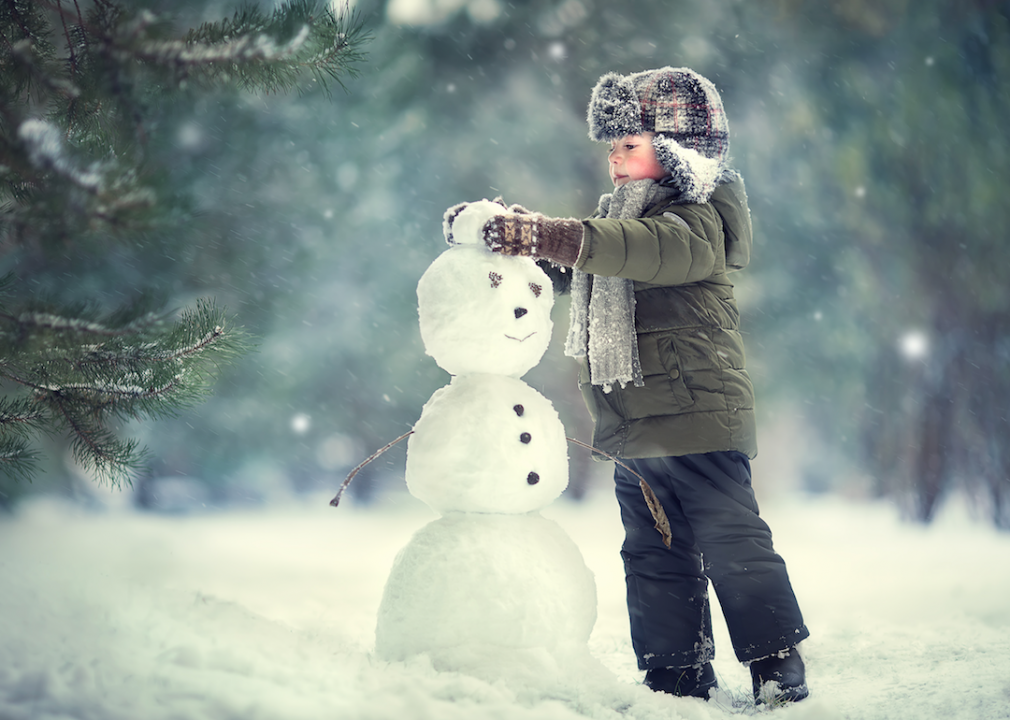
Smolina Marianna // Shutterstock
#8. Get a warm hat, scarf, and other winter accessories
Complete your selection of blizzard-proof clothing with a cozy hat, scarf, or cowl and anything else you need to stay warm. To preserve body heat and prevent hypothermia, always ensure these clothing items remain as dry as possible.
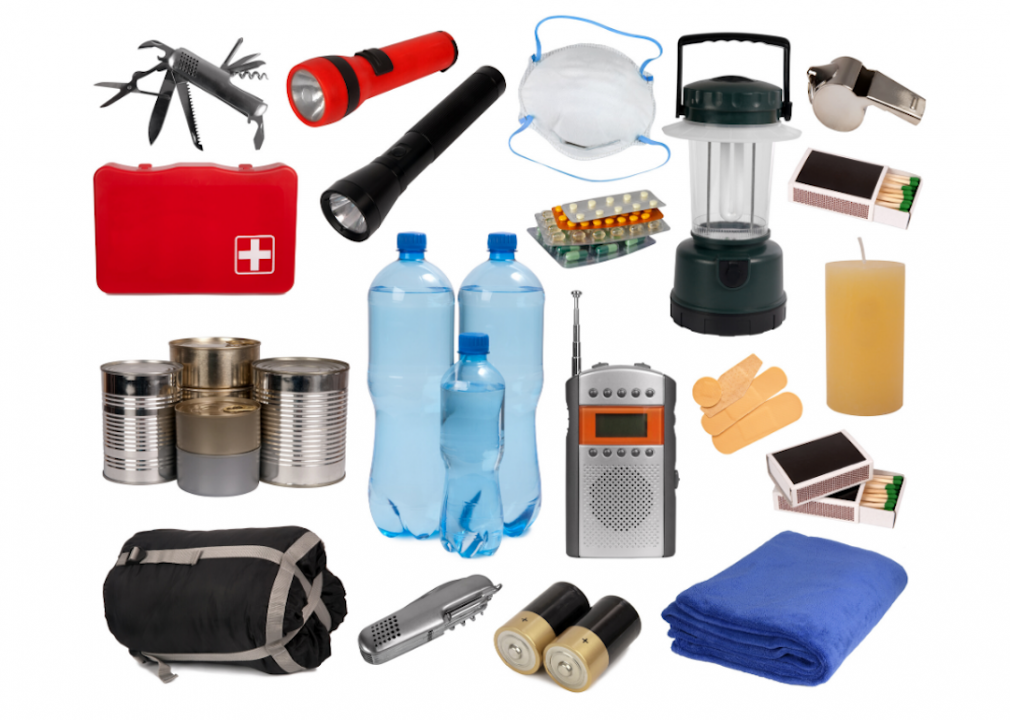
photka // Shutterstock
#9. Create an emergency supply kit
Experts recommend keeping enough supplies in your home to allow you to survive on your own for a full week in case of emergency. Your emergency supply kit should include flashlights, a battery-operated AM/FM radio, extra batteries, a whistle, iodine tablets, toiletries, a first aid kit, and any prescriptions you take regularly.
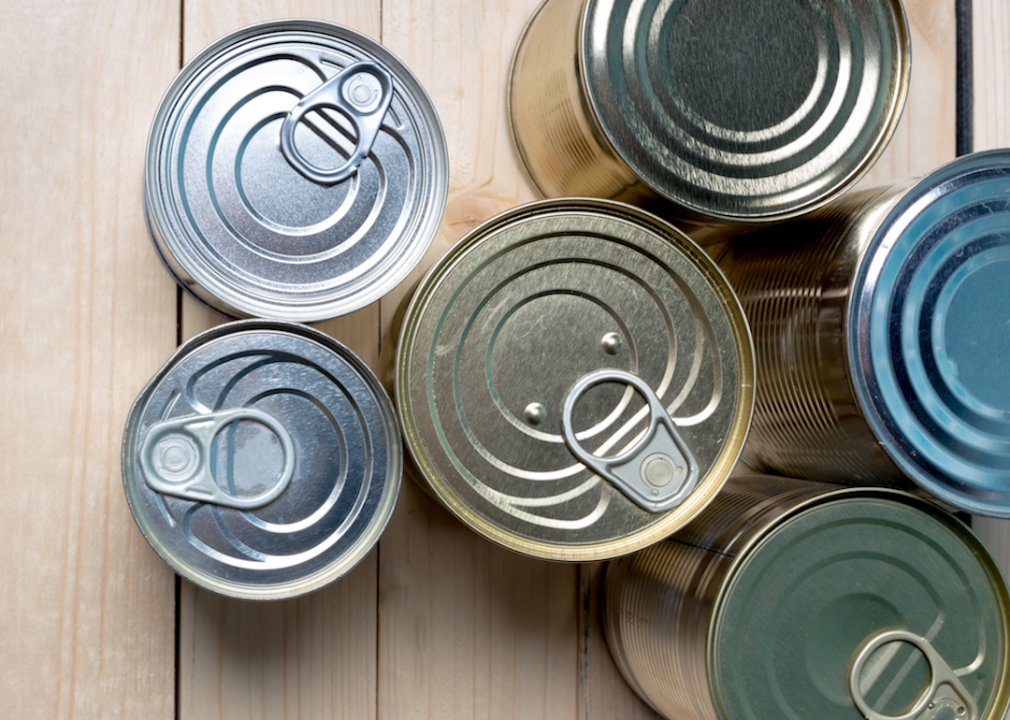
FabrikaSimf // Shutterstock
#10. Prepare a three-day supply of food
Keep enough nonperishable food to last for in the event of a power outage. Try to include foods that are high in both calories and nutrients to prevent malnourishment. Plus, with no way to predict where you will take shelter, pack foods that need little to no preparation or refrigeration.
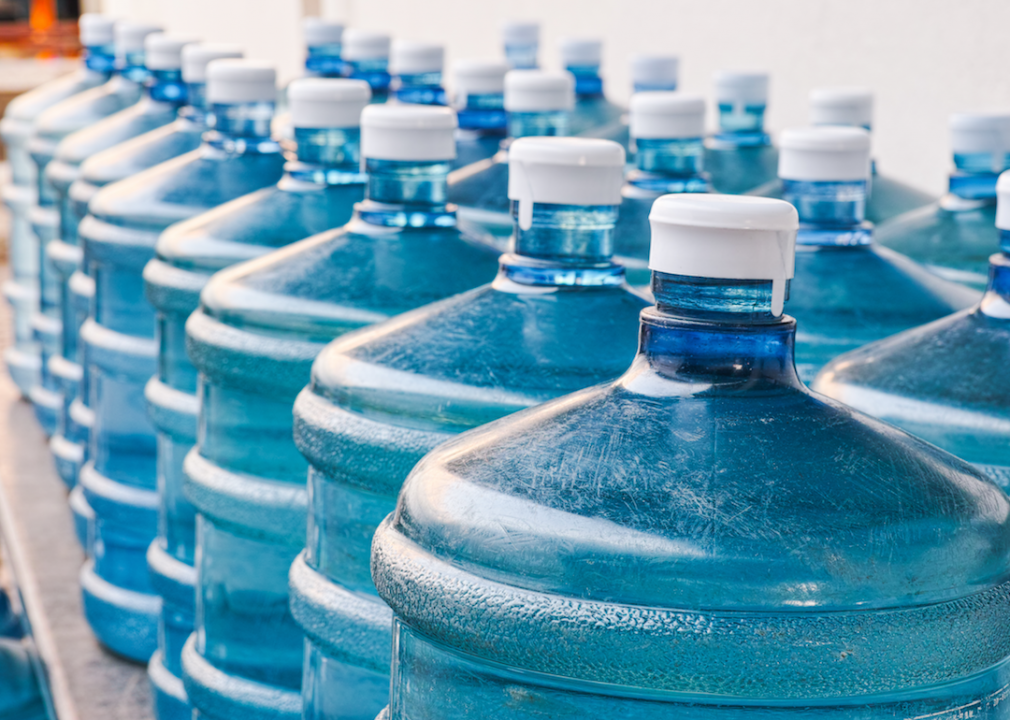
skhunda // Shutterstock
#11. Set up a three-day supply of water
Having enough food won’t matter if you don’t have a supply of clean, fresh water. In an emergency, tap water may no longer be safe to drink. Store at least one gallon of water per day per person or pet in clean jugs to ensure that you stay hydrated.

trezordia // Shutterstock
#12. Keep rock salt on hand
Icy, slippery walkways can be just as dangerous as snow drifts. Plan ahead and avoid accidents by salting any steps, sidewalks, or other walking paths with rock salt, which .
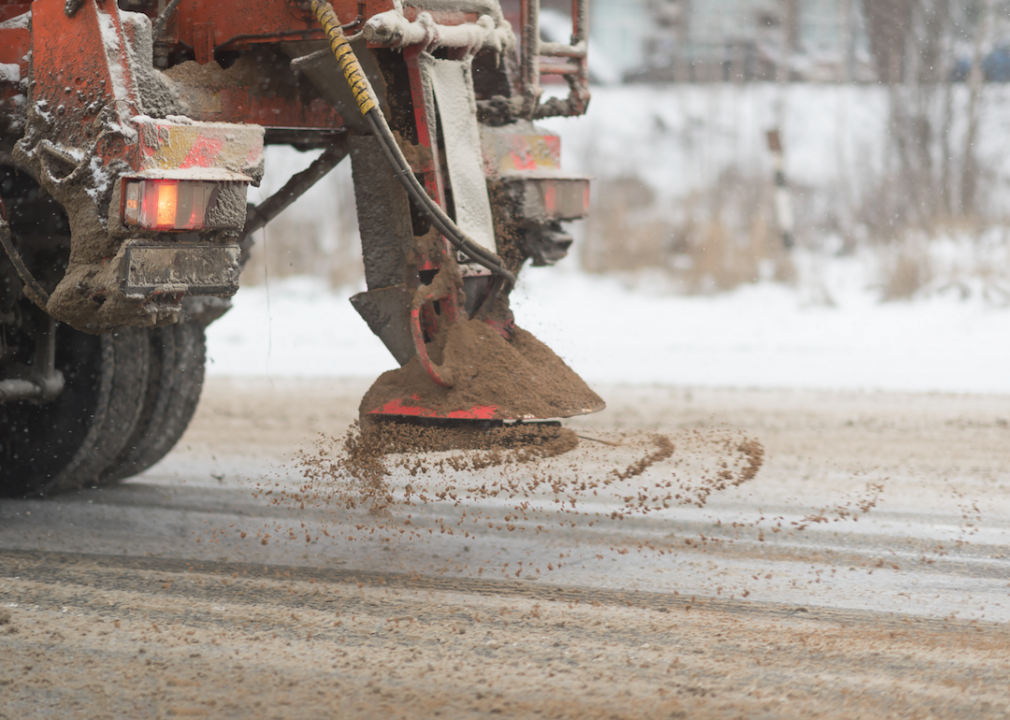
MakDill // Shutterstock
#13. Buy a bag of sand
If you live in a climate that routinely dips below 15 degrees Fahrenheit, rock salt may not be the most effective choice for managing slippery surfaces. Salt . In extreme cold, sand is actually your best bet. Sprinkle it all over ice and snow to create friction that allows you to walk safely across the surface. Many have seen city-commissioned trucks dropping sand—rather than ice—on local roadways.
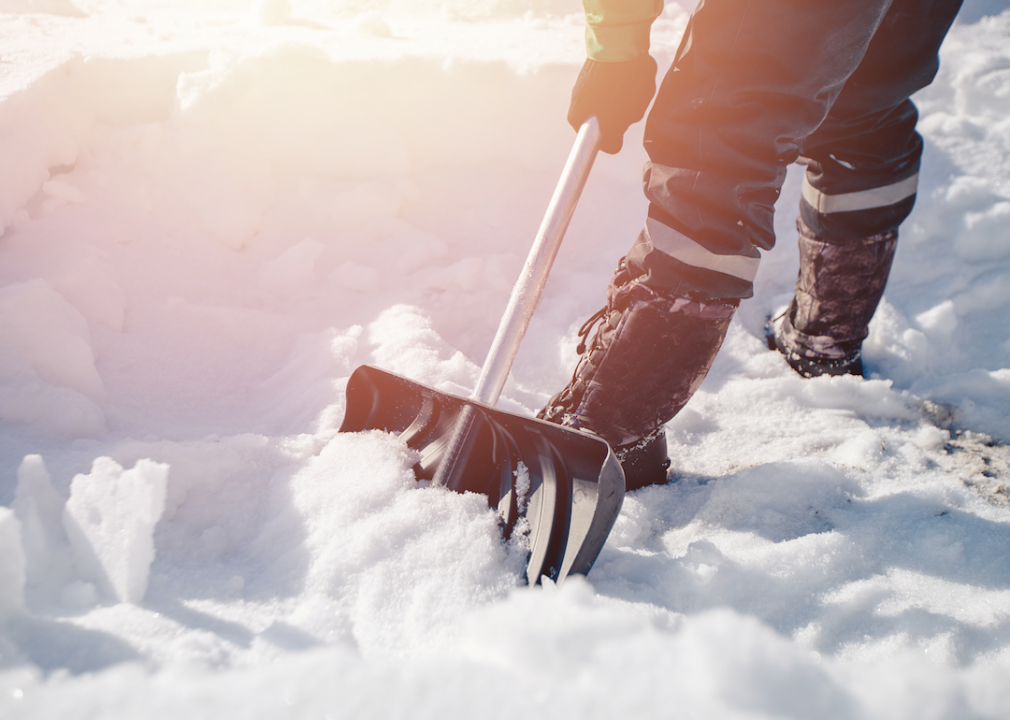
Parilov // Shutterstock
#14. Get a solid snow shovel
Though shovels come in all shapes and sizes (from 18 to 30 inches wide), the best ones you can easily handle. Make sure you can easily lift it—without risking injury such as to your back—and take the weight of the snow into consideration.
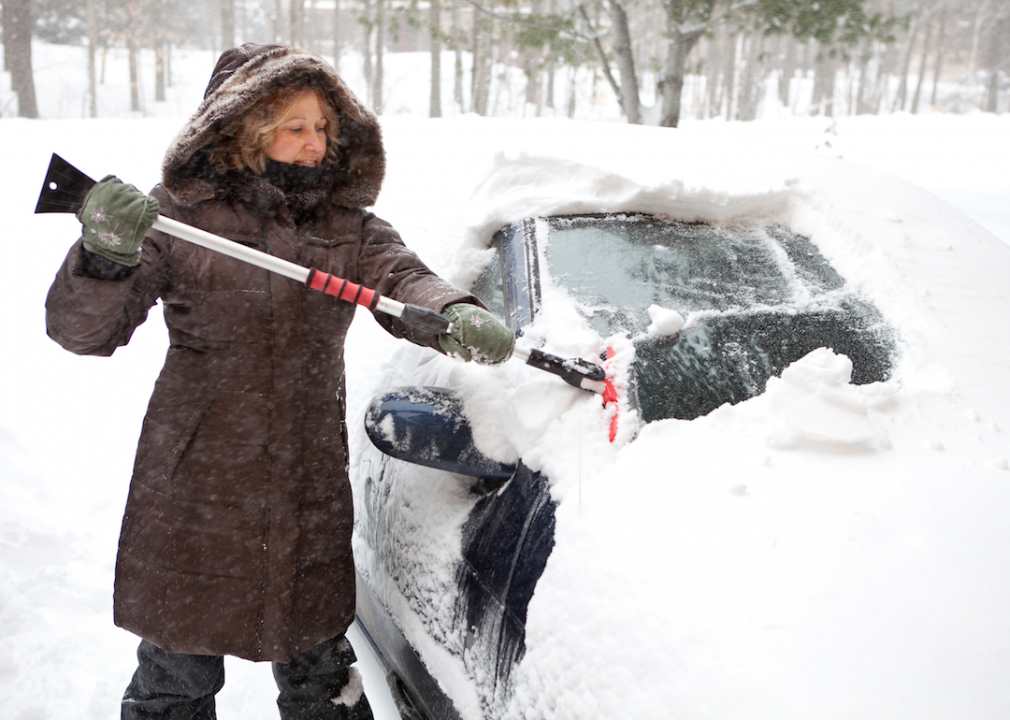
Paul Vasarhelyi // Shutterstock
#15. Buy a windshield ice scraper
You can use commercial de-icing sprays or saltwater solution to melt ice off the windshield, but it’s best to keep an ice scraper on hand in case you don’t have other supplies. Use short, powerful strokes to chip the ice off the glass. Many of these come with a snow brush on the end, making them very versatile in a pinch.
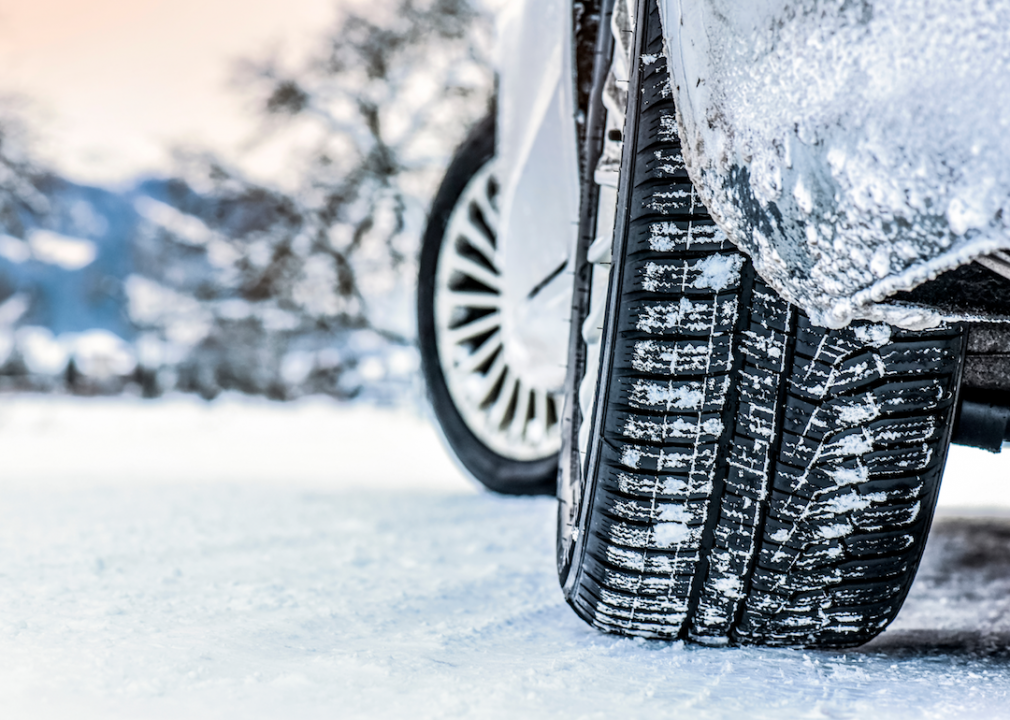
Krasula // Shutterstock
#16. Buy winter or all-season tires
Start thinking about preparing your car for winter in the fall. Ask your mechanic about which snow tires or winter tire covers would work best for your car. Though chains were once a popular choice, on most roads.
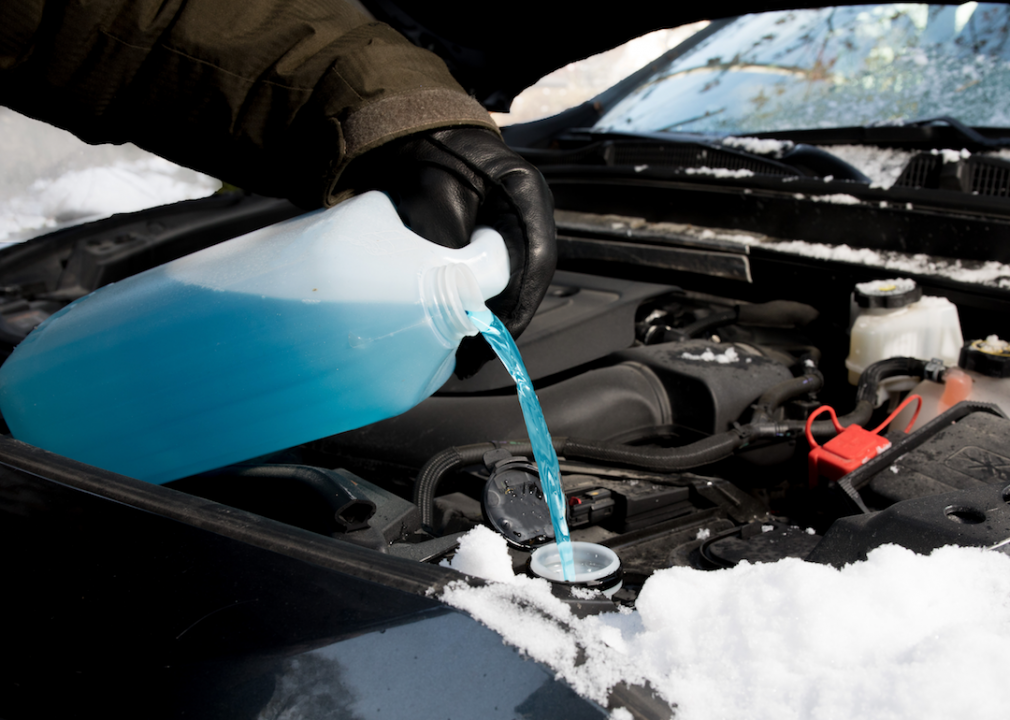
George Socka // Shutterstock
#17. Winterize your car
Schedule an inspection before the first storm of the season and make sure an expert checks your battery, brakes, antifreeze, windshield wipers, washer fluid, ignition system, thermostat, lights, exhaust system, and oil level. It’s always a good idea to keep an emergency kit in your car, too.
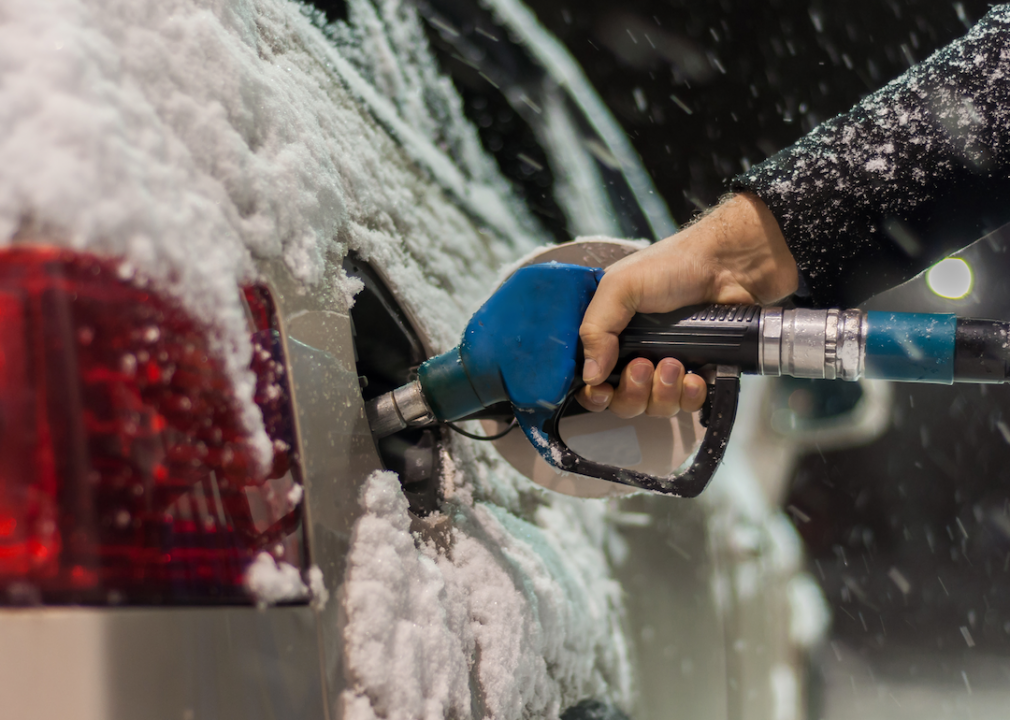
Irin Babkova // Shutterstock
#18. Keep your gas tank at least half-full
Follow the Boy Scout motto—“Be prepared”—and ensure that you have a sufficient amount of fuel in your car at all times. Besides keeping your car ready to drive anywhere in the event of an emergency, a full tank also keeps the fuel lines from freezing. If an emergency strikes, the last thing you want is to wait in a long line for gas.
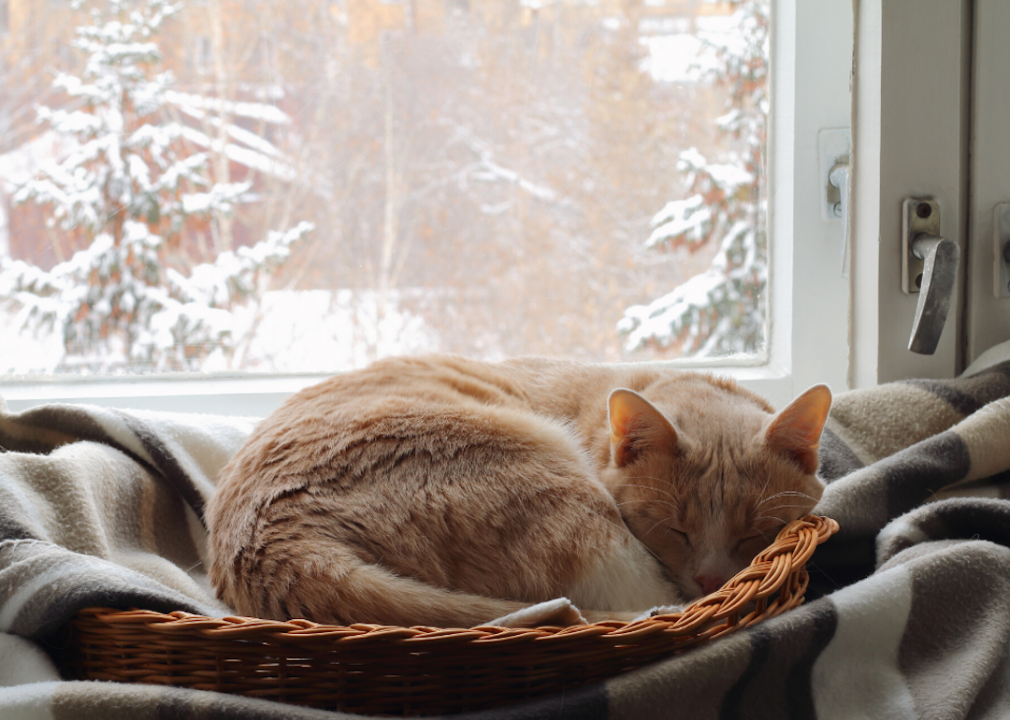
Canva
#19. Install storm windows
Storm windows—an additional set of windows mounted on the outside of your home—provide greater insulation and improve energy efficiency. You can also opt for that you apply with a hairdryer if you don’t want to install a second set of windows.
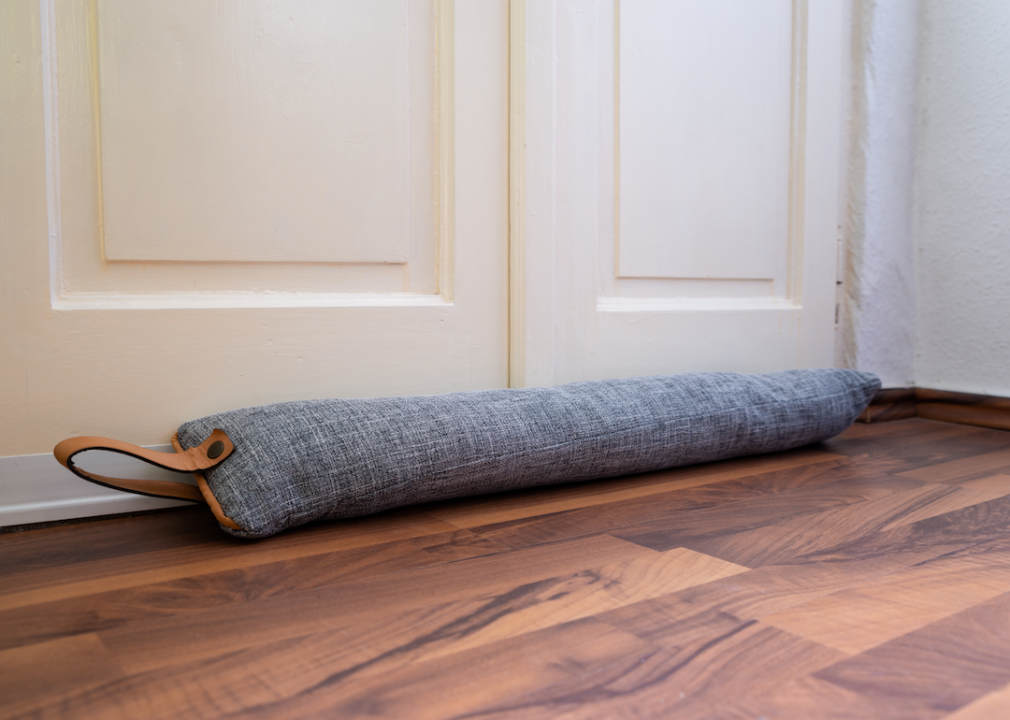
Andrey_Popov // Shutterstock
#20. Block drafts beneath your doors
Freezing winds can also sneak into your house through the cracks underneath your doors—especially in older homes. Stop the problem with or a DIY draft snake.

sergioboccardo // Shutterstock
#21. Check your roof for leaks
In the fall, hire a contractor to examine your roof’s structural integrity and check for any existing leaks. Heavy snowfall accumulation can cause extensive (and expensive) damage to unstable roofs, not to mention water damage upon melting.
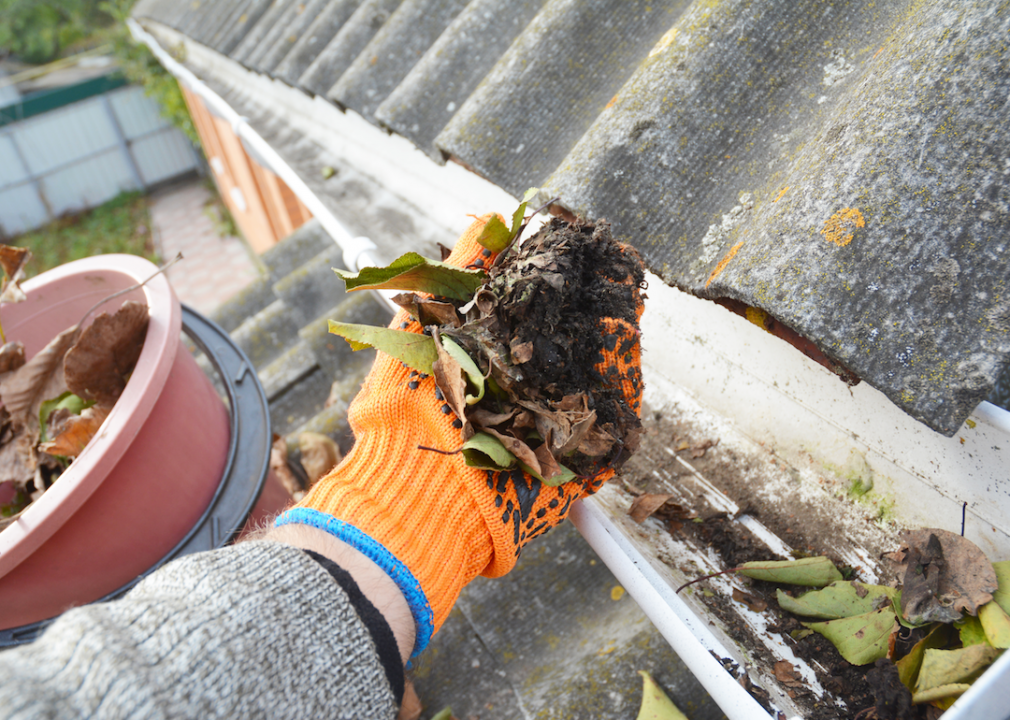
Radovan1 // Shutterstock
#22. Clean your gutters
This might seem like a relatively minor task, but full gutters can become a huge problem during winter storms. Clogged gutters leave no room for snowmelt or rainwater, so any additional rain, snow, or sleet will eventually leak into your house. The debris also absorbs water like a sponge, becoming heavier and heavier until the gutters detach from the roof. Blocked water in gutters can also freeze in winter storm conditions and cause even more leaks. Just , people.
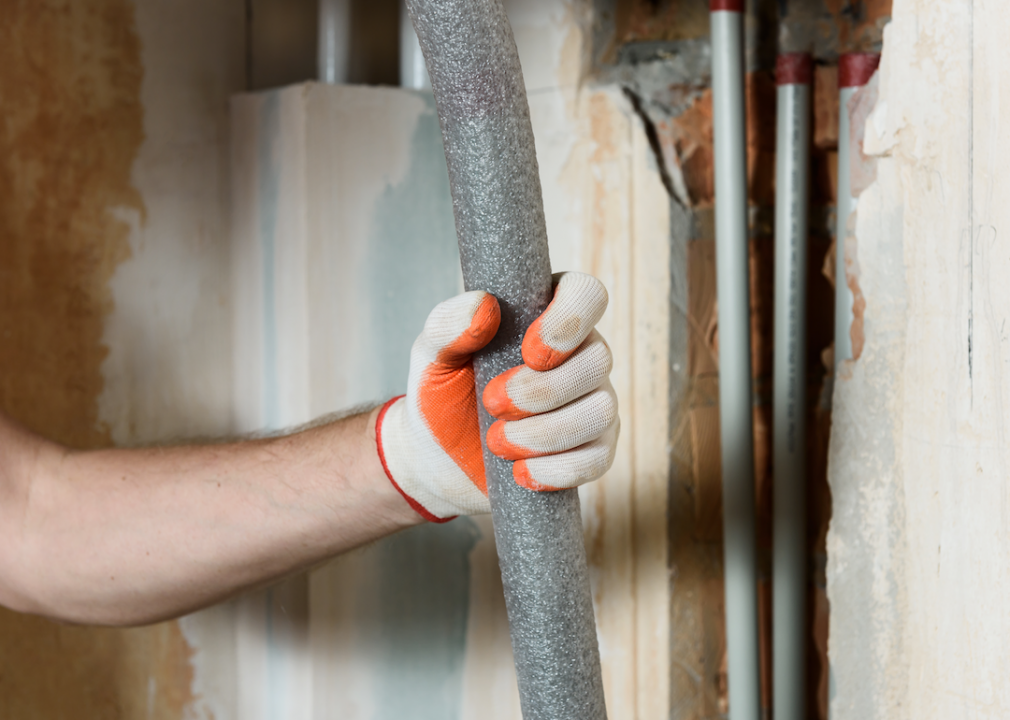
Photo BIS // Shutterstock
#23. Check your pipes and insulation
In extreme cold, the water pipes in your home can freeze. When water freezes, it expands, bursting pipes and leaking everywhere. Prevent this problem by in basements, attics, and other crawl spaces.
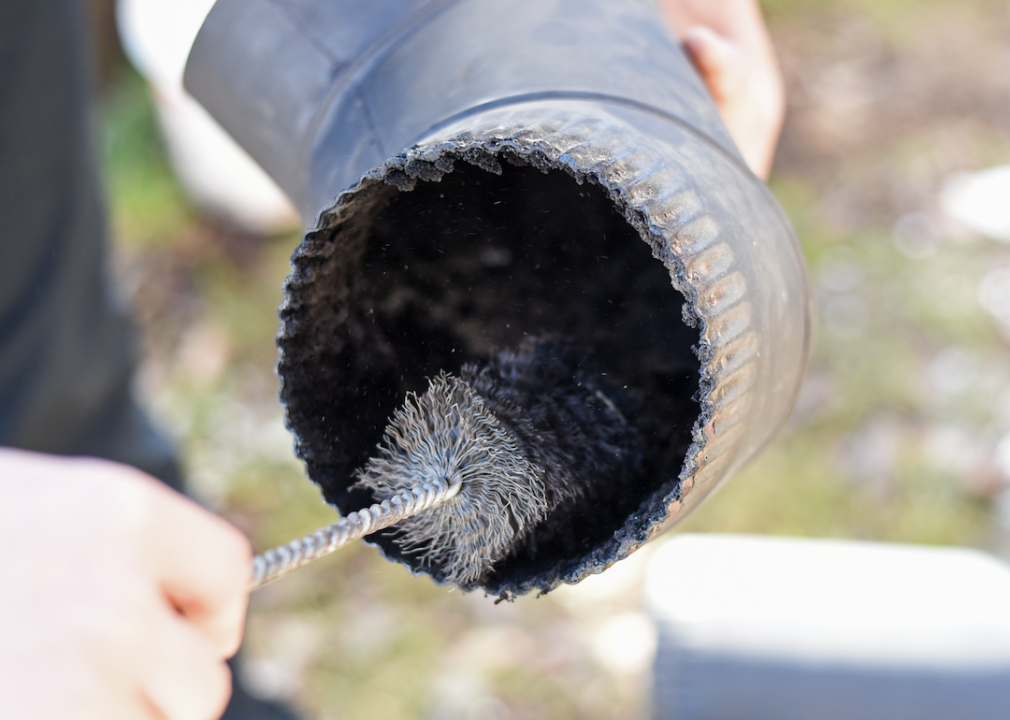
Maja Marjanovic // Shutterstock
#24. Have your chimneys cleaned and inspected yearly
A will inspect your chimney and fireplace for structural integrity, remove flammable buildup called creosote, and clear out any debris that may have accumulated during the year. This not only keeps you safe from fire and carbon monoxide poisoning but also improves the efficiency of your stove or fireplace.
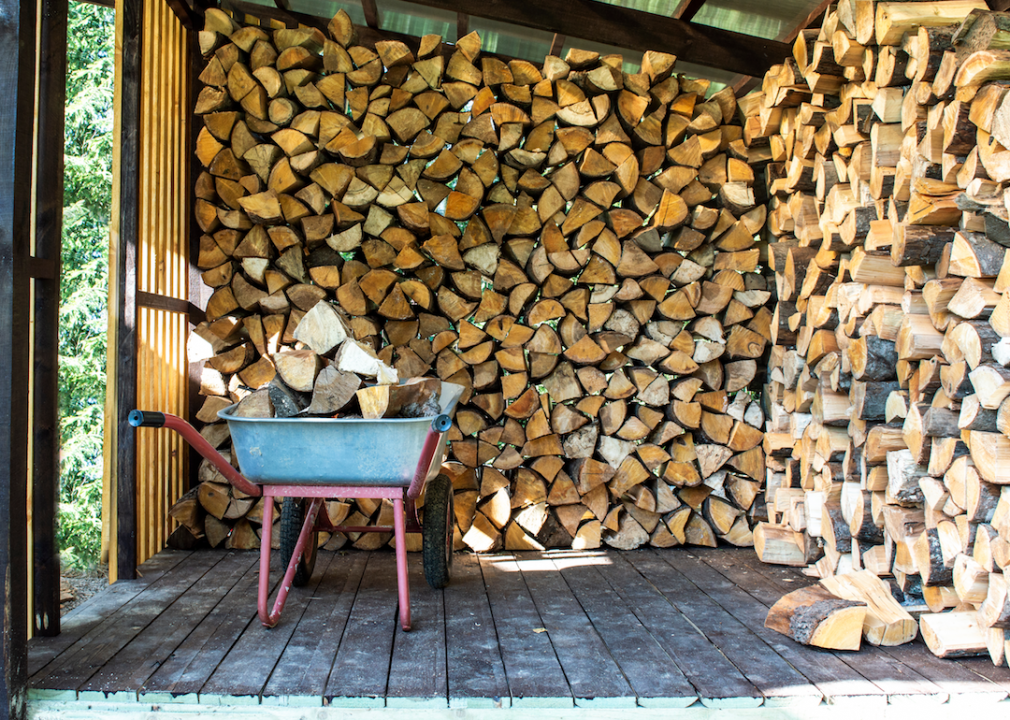
lilija_kamarova // Shutterstock
#25. Stock up on heating fuel
If your home has a fireplace or wood-burning stove, ensure that you have enough firewood on hand to heat your home for a day or two in case of a power outage, or if you are snowed in.
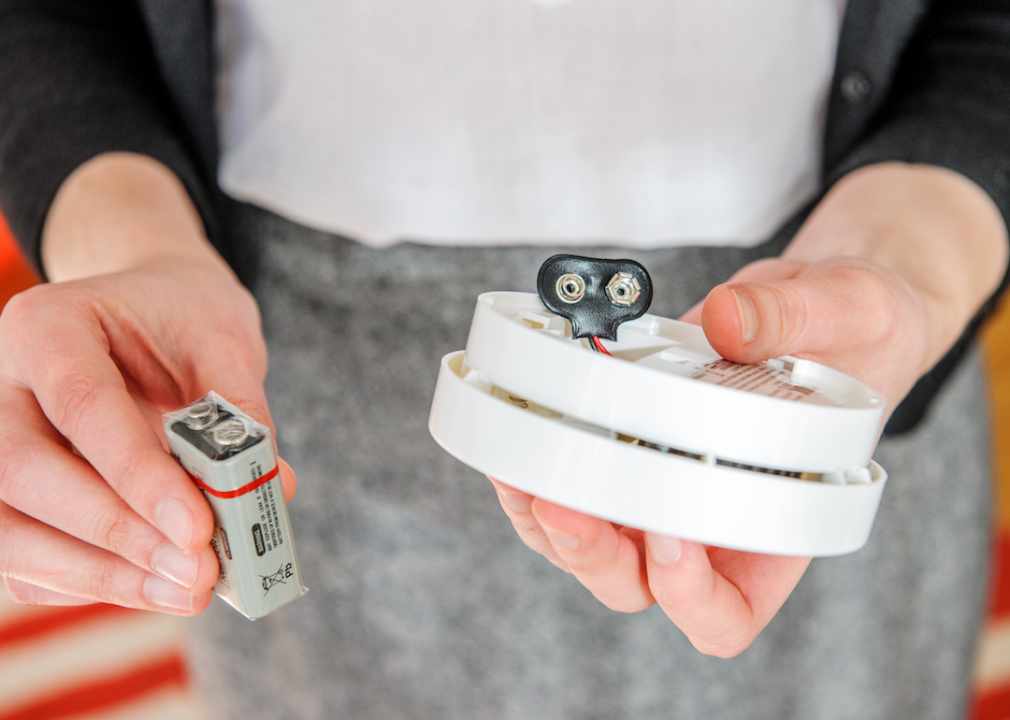
Hadrian // Shutterstock
#26. Check your smoke alarm and carbon monoxide detector
Don’t be fooled by the cold weather: It’s still possible for a fire to start in the dead of winter. Carbon monoxide detectors are also critical—especially in homes with fireplaces or wood-burning stoves.
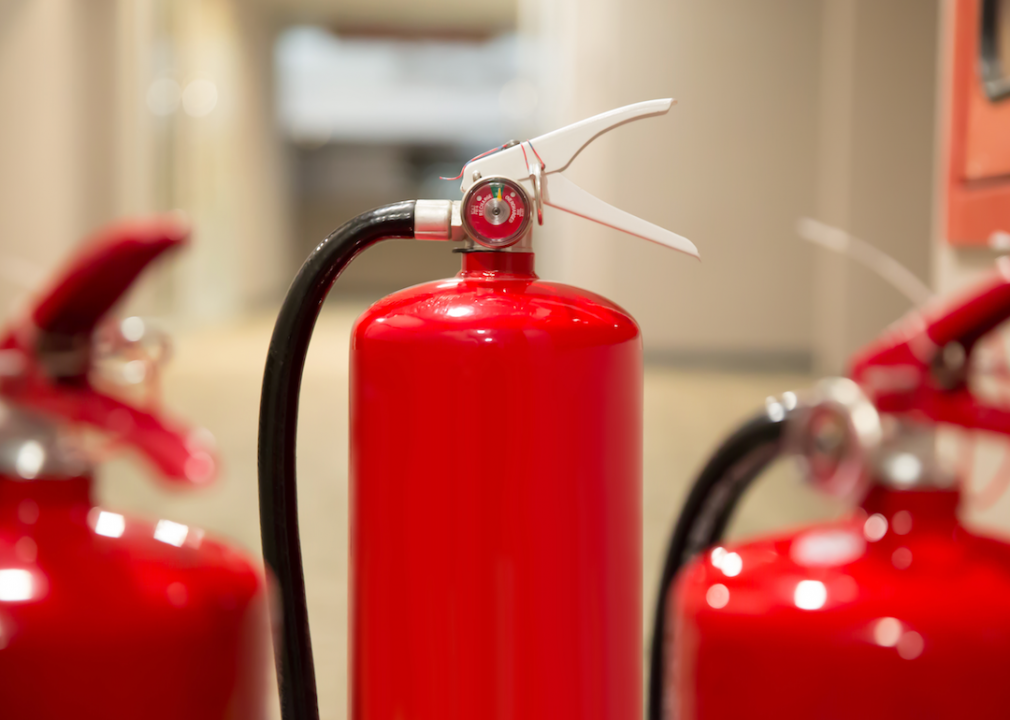
Eakrin Rasadonyindee // Shutterstock
#27. Make sure you have a fire extinguisher
On a related note, everyone should have a small fire extinguisher on hand in case of fire, so take this opportunity to check that yours is still in good working order.
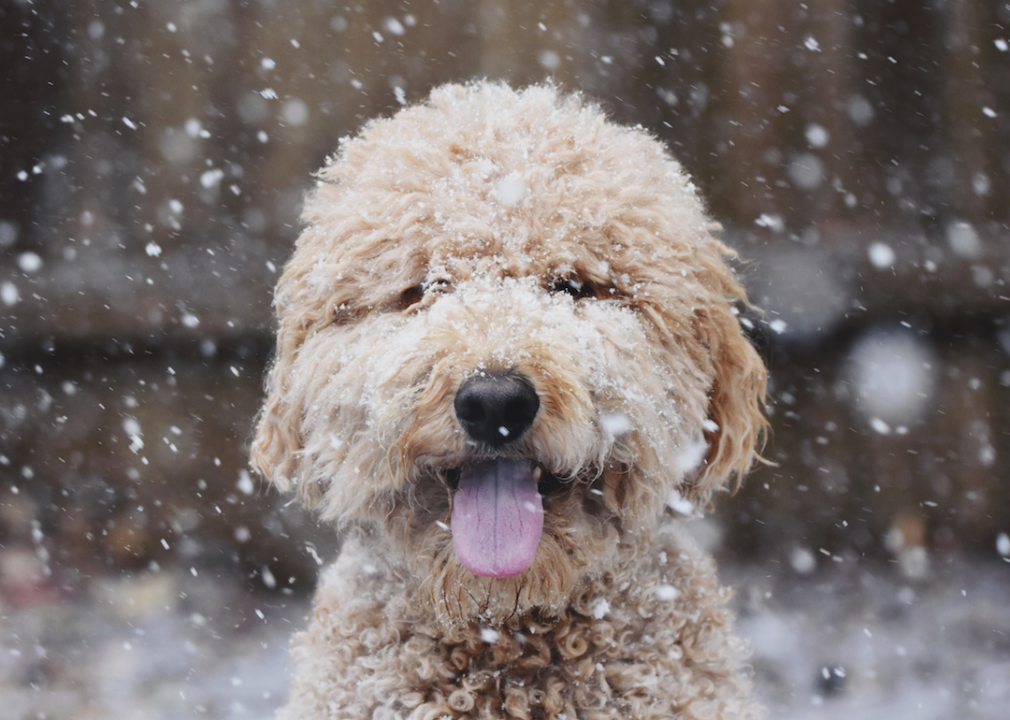
Canva
#28. Plan for your pets
Human family members aren’t the only ones who will be affected by extreme weather. Consider how you will care for your pets if a blizzard or storm hits. If you your animals live outside, ensure that they have easy access to shelter in case you’re not able to return home in an emergency. Also prepare their food and medications as part of your own emergency pack.
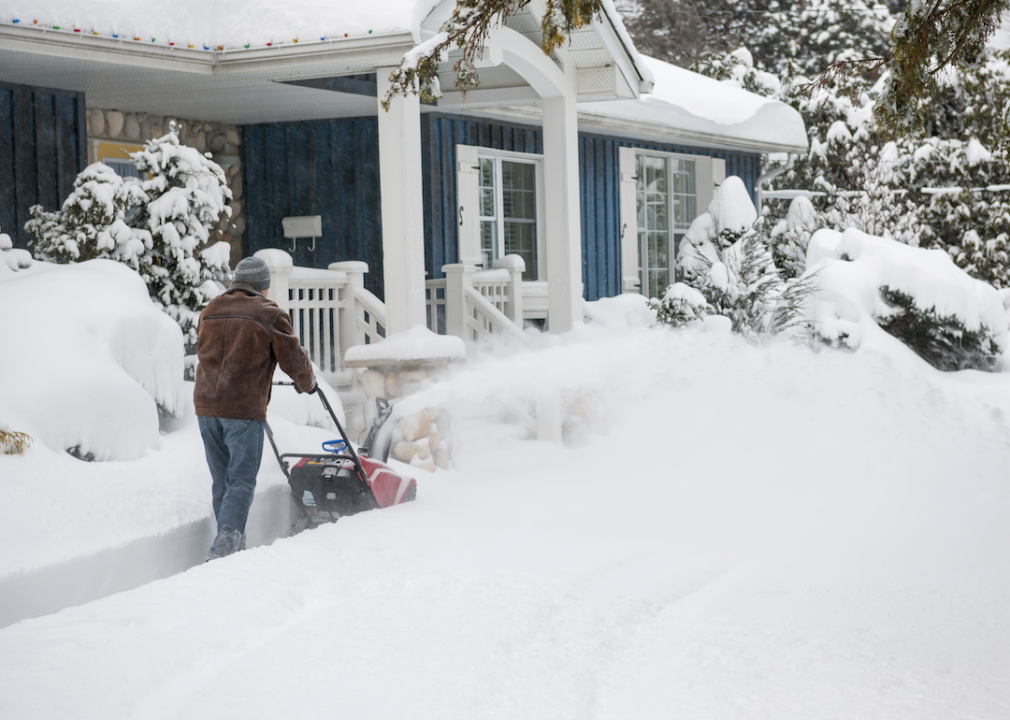
Elena Elisseeva // Shutterstock
#29. Check on the elderly and anyone with limited mobility
Older neighbours, family members with disabilities, or anyone without access to a car might need your help during a severe winter storm. Let them know they can count on you during an emergency and check on them regularly.

ImYanis // Shutterstock
#30. Download the Red Cross Emergency: Alerts app
This on severe weather conditions and other hazards in your area. It also allows you to share alerts with family and friends, check on their safety, and access information about Red Cross emergency shelters.
